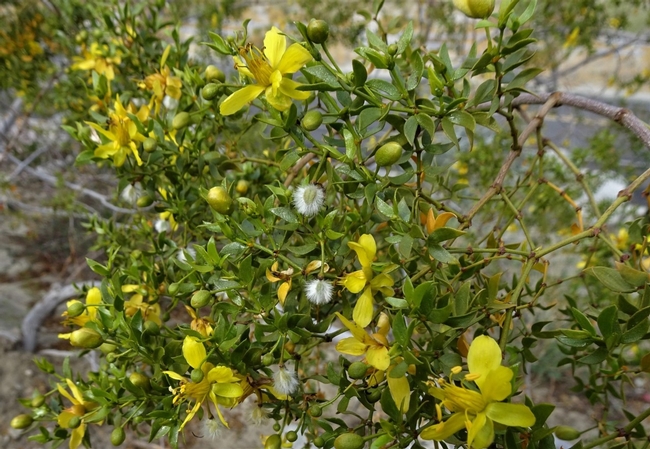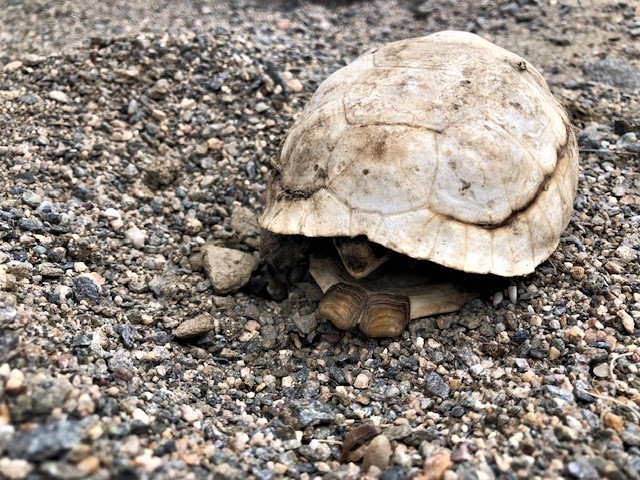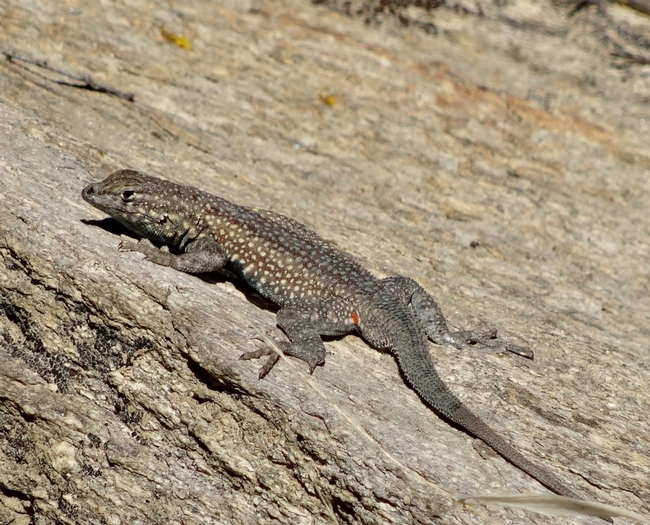A "Natural History Note" From UC California Naturalist's lead scientist, Dr. Cameron Barrows.
In nature, species are constantly “striving” to be “better” species. To be clear, this is not a conscious effort, rather that improvement can occur through reproduction, there are new combinations of genes being created with every generation, both through mutations and through the mixing of genes through sexual reproduction. For asexual species, gene mutations are the avenue for change; for species capable of sexual reproduction, there is both mutation and the unique gene combinations of the two parents. Change (evolution) for asexual species is slow. Change for sexual species is much faster. The arbiter of whether a mutation and/or a unique gene combination is “better”, more successful at surviving and ultimately reproducing themselves, is the environment, and the environment is always changing. Slowly or quickly, change is happening. Now, through climate change and the introduction of invasive species, we are often the catalysts of change. Before we arrived on the scene climates still changed (but more slowly), and new species did show up and disrupt the status quo, and once in a great while an asteroid slammed into the earth. Change has always been a feature of nature, and the species that make up the nature we all love are there because they were “better” than their predecessors at surviving and reproducing in today's environment. Tomorrow's environments will be different.
Creosote bush is successful by any measure. They have become one of, if not the, most numerous species in each of the Chihuahua, Sonora, and Mojave Deserts. I can think of a handful of plant species that straddle two of those deserts, but only Creosote bushes thrive in all three. Over the eons they have evolved, via mutation and unique gene combination, a cocktail of chemicals in their tissues that repel over-browsing by rabbits and pronghorn antelope and tortoises and desert iguanas and chuckwallas. That same cocktail appears to repel damaging bacteria and possibly viruses, and so has the potential to benefit human health as our disease vectors develop immunities to the antibiotics we use today. But you might object, what about the 60 or so insects that are specifically associated with creosote bushes, what about the 14 species of creosote gall midges that lay their eggs in the plant's tissue to create abnormal growths for their larvae to eat and be protected from parasites? The answer is that none of those pesky bugs kills or reduces the reproductive potential of their creosote bush hosts. That which does not kill them makes them stronger.The creosote bush’s strategy is longevity. They can live for hundreds and in some cases thousands of years, in part because nothing eats them (enough) to kill them.The creosote bush's strategy is longevity. They can live for hundreds and in some cases thousands of years, in part because nothing eats them (enough) to kill them. During their long lives there will be many droughts and many wetter periods. Only occasionally will the conditions be right for long enough to allow for successful reproduction. “Young” creosote bushes are rare compared to the densities of their parents. If you live for centuries you do not have to be successful at reproduction very often, and the cost of producing flowers, fruits, and seeds almost every year is not enough to subtract from their longevity. So far, in our analyses of how species are responding to the levels of climate change we are currently experiencing, creosote bushes seem to be shrugging their leafy shoulders.
If longevity is good, then perhaps desert tortoises are also adapted to surviving climate change. Desert tortoises do not live centuries, but they might live as long as we humans do, which is much longer than most wildlife species. Through their lives they too will experience droughts and wetter periods. Like creosote bushes, there are increasingly rare combinations of wet years that foster survivorship in the vulnerable hatchling tortoises. Not being able to predict the future any better than we can, except for in the driest years, female tortoises will lay a clutch of eggs in most years, hedging their bets that the eggs will hatch into a wet weather cycle. If it is a wet spring with lots of food, the females may lay larger clutches and sometimes multiple clutches, all depending on the health and condition of the females. Unlike creosote bushes, there is a considerable cost to the female tortoises for each clutch they lay. If conditions are dry and there is little or nothing for the tortoises to eat for multiple years, there can be a terrible cost in terms of the females' body condition, health, and survivorship. Dr. Jefferey Lovich has been studying desert tortoises for decades. In recent years he has found high tortoise mortality in some populations, and when examining the dead tortoise shells, he has found that the vast majority of dead tortoises were females. Those areas with high female mortality have been hit particularly hard by increasing aridity born by modern climate change.Desert tortoises do not live centuries, but they might live as long as we humans do.
At the opposite end of the longevity spectrum are side-blotched lizards, which typically live for one, or more rarely two years, especially in our hot deserts. Dry year or wet, they need to breed and produce viable young within a year, or at most two years, or their population is kaput. What we are finding is that this lizard's preferred habitat, as evidenced by where we find them at the highest densities, is shifting to higher elevations. There are still some at lower elevations, but those are usually in or near desert washes where rainwater can be concentrated, and so conditions are not quite as arid as those in the open desert. Or they occur in appropriately landscaped suburban yards where conditions are also less arid (if cats or the high concentration of roadrunners do not eat them). Otherwise, side-blotched lizard populations are moving up in elevation. Those living at higher elevations reproduce better than those at the lower elevations, so that upper elevation edge is expanding while the lowest elevation edge is incrementally contracting. In dry years that shift is clear; in wetter years there is a bit of a reprieve and the lower edge lizards do ok. Every year is different, but the overall trend is pushing these lizards, along with other species, up in elevation.At the opposite end of the longevity spectrum are side-blotched lizards, which typically live for one, or more rarely two years.Long-term observations are essential to discover these patterns. A community of naturalists that help collect these data at multiple locations across gradients of aridity, are equally essential.
Nullius in verba
Go outside, tip your hat to a chuckwalla (and a cactus), and be safe.
Mar 20, 2021


